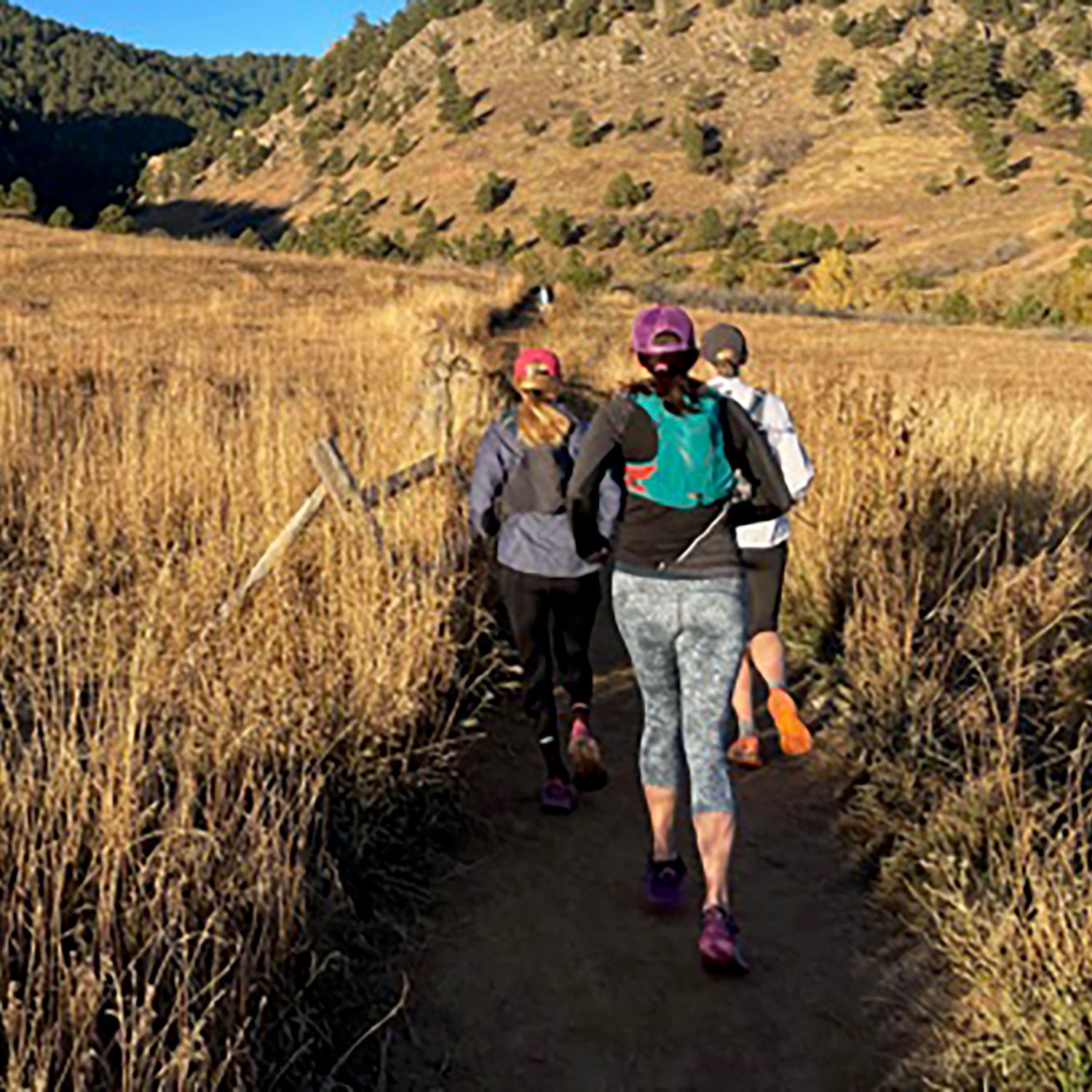Water is heavy—one liter weighs 2.2 pounds, and four liters weighs almost nine pounds. Even the best-designed hydration packs or vests, waistbelts, or handheld carrying systems don’t make water any less heavy than it is. A good system does, however, distribute that weight effectively and allows you to carry what you need comfortably.
Figuring out what amount of fluid you need to bring with you on a run or other outdoor adventure is another story altogether. Deciding how to carry said fluids, that’s where I can help.
From road and trail running, to triathlon training, Nordic skiing, and multi-day adventure racing sufferfests, I’ve carried fluids to keep myself from dying of dehydration roughly 18,542 hours of my life. Add to that an obsession with always (and I mean always) having a water bottle in the car lest I freakishly obsess about dire thirst within the first 12 minutes of any road trip (just ask my husband), and I can safely claim to be (one of the world’s only) hydration vessel connoisseurs.
I once filled a snack-sized Ziploc bag with water, bit a tiny hole in one bottom corner and carried the bag by that corner (so it wouldn’t leak) as a make-shift soft flask on a run. I was visiting in laws in humid Upstate New York in July, had packed poorly, and didn’t want to die on an hour-long jog. But when I do have all my gear at my fingertips in my own home, I have decades of iterations of hydration-carrying devices to choose from.
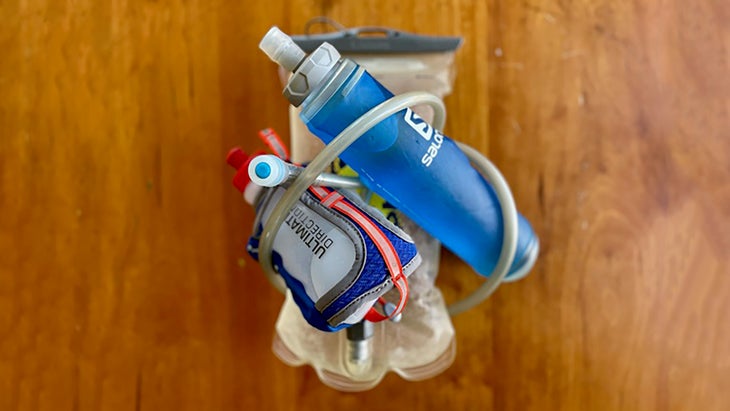
There’s a lot to consider with today’s options for carrying liquids on a run or other outdoor activity. Choices range from bladders/reservoirs in a pack, vest, or waistbelt; soft flasks carried in a vest, waistbelt, or in hand; or hard-sided bottles carried in a pack, vest, waistbelt, or in hand. Here’s a look at the pros and cons, best (and worst) situational usages, and crux (most critical consideration) of each.
Hydration Bladder, a.k.a. Reservoir, a.k.a. CamelBak
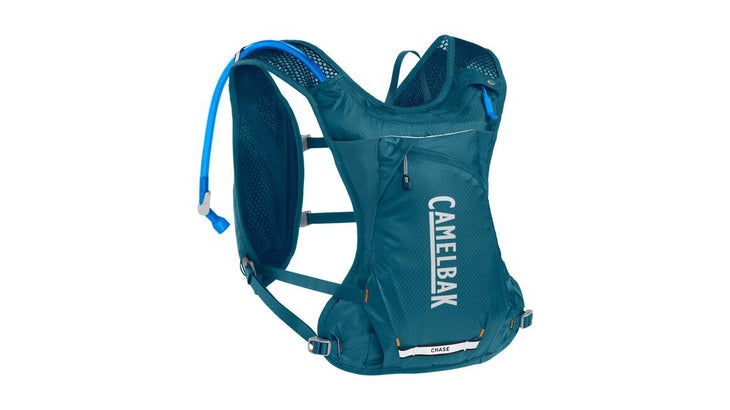
(Let’s be honest: A lot of people refer to any sort of backpack with a hydration hose as a CamelBak even though it may be made by any other brand. This is incorrect, so if you fall into the camp of calling these things “CamelBaks,” please reconsider and call them running hydration vests or packs and the fluid container a bladder or reservoir.)
Pros: Among all the ways of carrying liquid while adventuring or running, hydration bladders carry the largest volume of fluids comfortably. Your choices for bladder liquid carrying capacity are generally: 1.5 Liter /51 fluid ounces, 2L/68 fl oz, or, 3L/101 fl oz, making them ideal for situations where you need to carry a lot of one kind of fluid (meaning, just water, or just an electrolyte replacement drink).
Cons: Bladders can be a pain to clean, although most hydration brands also sell pipe cleaner-type brushes, cleaning tablets, and/or drying racks. I often just turn bladders inside out and rinse them before airing dry.
When to use a bladder: Runners benefit most from utilizing a hydration bladder in a pack or hydration vest on long trail or mountain runs, especially where resupplying from fresh-water sources isn’t available. To match the volume of a typical bladder you’d have to carry four to 10 soft flasks or multiple bottles…and doesn’t that sound annoying?
When not to use a bladder: A runner shouldn’t need to carry a hydration bladder in races with regular aid stations. Again, water is heavy and usually plentiful on racecourses.
I’ve never, ever worn a hydration bladder on my back for a road run of any sort. Even for long runs, like a 16-miler around the paved paths and streets of Boulder, Colorado, there are plenty of public water fountains available, or the opportunity to buy a cold drink at a gas station. I’ve done both instead of carrying a load of water on my back.
Runners also might forgo the hassles of filling, cleaning, and wrestling with a bladder, a tube, and a pack or vest on shorter runs where they won’t need as much volume of liquids. For shorter runs of any sort, bottles and flasks are easier to deal with overall, and can carry a sufficient amount of liquids for runs up to two hours.
Crux when using a hydration bladder for running: Finding a pack that carries a full bladder securely and comfortably—without smacking you in the back repeatedly while running flats or downhill—is imperative.
Read Our Reviews of the Best Running Hydration Vests
Soft Flasks
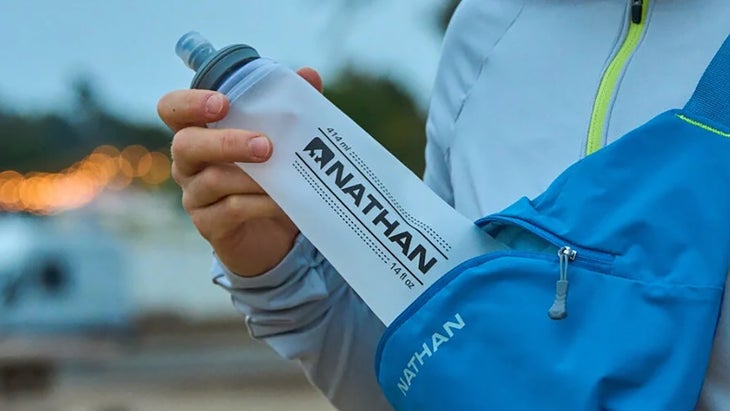
The invention of soft flasks roughly 10 years ago has pretty much eliminated the need for hard-sided bottles in my personal running gear collection. Some runners, however, still prefer hard-sided bottles. Soft flasks come in varying sizes, ranging from holding just four ounces of liquid to 17 ounces max.
Pros: Due to their narrow, tubular shape, soft flasks tend to carry easily and comfortably in the front pockets of running vests or in handheld contraptions from companies like Nathan Sports, Salomon, and Ultimate Direction. When worn in chest pockets of a running vest, they’re easily accessible on-the-run, even without taking them out of the pocket (via a chin-tucking move and a squeeze of the flask). Straw lids allow access without tucking the chin, but I personally find them obtrusive and unnecessary.
What I like about using a soft flask over a hard-sided bottle is that soft flasks collapse as you use them. Once they’re empty, they take up minimal space in your pack or can even be shoved into a tights or shorts pocket. They’re also lighter than hard-sided bottles, and you don’t hear the liquid within sloshing around like you do with hard-sided bottles.
Cons: Like hydration bladders, soft flasks can be a pain to clean. I tend to turn them inside out to rinse them off, but that still leaves corners near the top where water gets trapped. For that reason, I’ve been turning them back to their original orientation after rinsing them inside-out, and inserting this into them. It wicks the water out of the interior and moves it to the exterior where it evaporates.
When to use soft flasks: Because they come in various sizes and can be shoved into vest or pack pockets, waist belts, or carried comfortably in hand in contraptions from companies like Nathan Sports, Salomon, and Ultimate DIrection, I think that any time is a good time to use soft flasks. I especially like them when I want to carry both some water and some electrolyte drink. I’ll fill one or two flasks with each, depending on the length of my outing.
Because they become shapeless and therefore floppy as soon as you start draining fluid, runners who prefer wearing waist packs find them difficult to pull out and return to pockets/sleeves.
When not to use soft flasks: When you prefer hard-sided bottles, or need more volume than is practical using multiple small flasks.
Crux when using soft flasks: Do not leave inside-out soft flasks drying on the kitchen counter for too long or your housemates will become annoyed. (Written from experience.)
Bottles
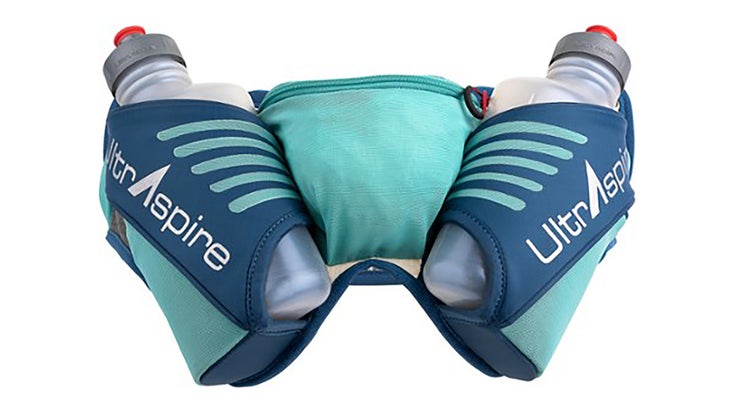
Water bottles made for runners hold a range of fluid volumes, from just four ounces to 20 ounces, and can be carried in hand with a comfortable strap, around the waist in packs that hold one large or two small bottles of various sizes, or in hydration vests from brands like UltrAspire.
Pros: Hard-sided water bottles are generally easier to clean than soft flasks or bladders. They also generally have a wider opening than soft flasks, making them easier to fill with just liquids, or with ice. Plus, they hold their shape so are easier to insert and secure in a waist belt sleeve.
Cons: Hard-sided bottles don’t collapse down as you drink from them like soft flasks do, which some prefer, but which makes them generally bulkier and harder to carry comfortably than soft flasks in my opinion. That said, bottle shapes have become sleeker and more comfortable to carry over the years. Companies like AmphiPod, UltrAspire, and Nathan Sports offer ergonomic bottles. And UltrAspire and AmphiPod have options that fall somewhere between bottles and flasks; they’re softer than bottles which makes it easier to squeeze water out of them, but harder than flasks which makes them easier to clean and, for some, hold.
When to use bottles: Even large bottles are ideal for taking to track workouts, placing on the infield, and sipping from during breaks. Water bottles are simpler than soft flasks or bladders to fill and clean, which some find enough to tip the scales their way. And use bottles if you prefer their secure feel over soft flasks for on-the-go hydration.
Also, both soft flasks and bottles work better than hydration bladders in events like ultramarathons because they can easily be refilled at aid stations. Simply hand an empty flask or bottle to your crew or a volunteer for a quick refill or do it yourself—it’s a lot easier than taking off your pack and taking out the hydration bladder to refill it.
When not to use bottles: When you prefer soft flasks to carry a similar amount of fluids. When you don’t own a waistpack or vest that comfortably carries bottles without bouncing around too much on flats and downhills. When you need a large volume of fluids only a bladder can carry.
Crux when using bottles: If you carry a bottle in a handheld device, make sure you switch hands once in a while. Carrying even the weight of one bottle on just one side can create muscle imbalances and pains.


